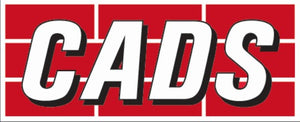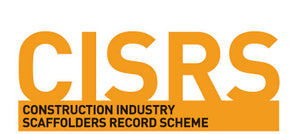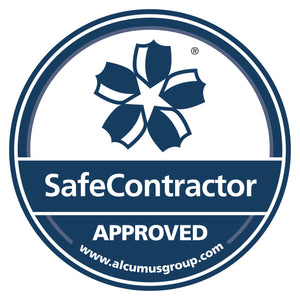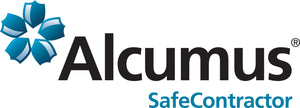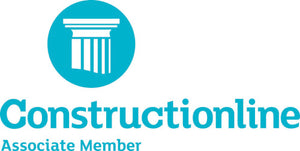13 July, 2023
Building work is one of the staples of the modern world, as there are always homes that need to be renovated or built and offices that need construction. The construction industry has many trades, such as carpentry, plumbing and roofing. Though none of these roles would be possible without scaffolding. In this blog, we will discuss the importance of this trade and why building work would not be possible without it. We’re sure that you will come to a similar conclusion as us about the vital role of the scaffolding industry. So, if you want to find out more about this trade then you’re in the right place. Keep reading this blog to find out more.
The importance of the construction industry
There is no doubt that construction is one of the largest sectors in the UK economy. Building work varies from large-scale projects led by the government to small domestic work such as extensions and conversions. Though all of these projects contribute to the sector being one of the largest in the UK. In fact, the commercial construction industry alone is worth a staggering 18.7 billion pounds. This is the 50th largest market size in the entire UK economy. Clearly, then, construction is important in the UK. So, what about the scaffolding industry? Why is it so important, and what do you need to know about scaffolding boards? Keep reading this blog to find out more.
Why is scaffolding important
Well, to put it simply without scaffolding, many construction projects would simply be impossible. Yes, modern cranes have become very capable and they can do many roles that would have been impossible a hundred years ago. Though there are still many jobs that need to be completed at height, that must be done by hand. Take brickwork, for example, this is a job that requires a lot of skill and it must be completed by a team of highly experienced professionals by hand. Scaffolding is, in short, the only way a large team of workers can complete this kind of task.
The different sections of scaffolding
As you might expect, there is far more to scaffolding than simply a series of poles and a scaffolding board. In fact, the world of scaffolding is filled with a myriad of different tools and parts that help to make up a safe final product. After all, scaffolding can be incredibly dangerous, and you will need to have many different items in your tool kit to build a safe scaffolding tower. So, in this section, we will discuss a few of these key elements so you can understand the entire process a little better. So, keep reading this blog to find out more.
Top rail
Aside from the main scaffolding board, which will be the platform for you to stand on the top rail is one of the most important aspects. In essence, this rail is your last form of protection at the top of the scaffolding platform. It will prevent you from tripping off of the edge, which is a very important role. The heights of scaffolding towers can often be fairly tall, and a fall from the top could result in serious injury. Therefore, it is vital that you fit your tower with a top rail. The rail will use a basic scaffolding pole and a series of brackets to fix it to the guard fence.
Toe board
The toe board is also an incredibly important part of the scaffolding tower and every accomplished scaffold professional should be well informed about how to fit one. Essentially, this board is fixed upright at the bottom of the guardrail. As you might expect, this toe board is designed to protect your feet or legs from falling off the scaffold boards. This kind of accident can cause serious injury, so it is very important to be fit one. The toe board should follow the scaffold boards all the way around the tower so the tradespeople are safe on all sides. So, what other key elements are there? Keep reading to find out more.
Base plate
Securing a scaffold tower is one of the most important parts of the tower-building process and something which every professional takes incredibly seriously. After all, a tower falling is an incredibly dangerous incident and should be avoided at all costs. Even if there are no people on the tower, the fall could hit people on the ground or damage equipment. A base plate is designed to minimise the chance of the tower falling, as it creates a solid base for the scaffolding to rest on. The base plate is made from scaffold boards and they are laid flat on the ground with the standard pole fixed to them.
Bracing
Effective scaffolding is all about creating a structure that can easily handle the weight of several people, as well as tools and materials. What’s more, the tower should be able to withstand winds and bad weather. Many of the elements we have already mentioned are designed to strengthen the structure, but bracing is arguably the most important. While the standard pole helps the tower from collapsing vertically, bracing prevents the tower from moving from side to side. Horizontal movement is extremely dangerous and can cause the tower to collapse very quickly. Bracing is made from standard scaffold poles and can be attached to the vertical poles at a diagonal or horizontal angle.
Coupler
You may well be asking how these elements and sections are fastened together. Well, the fastening of items to a scaffold tower is one of the most important roles of a professional scaffolder. After all, if a professional does not tighten these elements correctly, then the structure may collapse, which could cause major issues. Couplers are small metal brackets that fit around the scaffold pole and fasten two poles together. They are tightened using a screw or threaded bolt. These items are essential for scaffold work and without them, it would be far more challenging to create safe structures. So, what about scaffold boards? Keep reading to find out more.
What are scaffold boards?
Scaffold boards are one of the most essential parts of scaffolding and they are used in a variety of different ways. Essentially scaffold boards are large pieces of wood which are cut into long, fairly thin pieces. Often, they resemble floor boards though they have much greater structural integrity than these. To improve their strength even more, they are often fitted with metal plating at the end. This metal work helps to prevent the board from splitting or becoming damaged when dropped. So, what are scaffold boards actually used for? Keep reading this blog to find out more about this industry.
What are scaffold boards used for?
While you may think that scaffold boards are only used for the floor of towers, you would be quite wrong in this assumption. Yes, they are used for this and it is probably what they are most famous for, but they are used in other ways as well. Scaffold boards are also used to create the base plate for scaffolding structures. As we have previously mentioned, this is an extremely important part of scaffolding and ensures that towers are strong enough to withstand a large amount of weight. What’s more, these boards are also used to create the toe board on different platforms.
How are scaffold boards reclaimed and reused?
Scaffold boards are often reused and reclaimed to create new items after they are no longer suitable for scaffolding. One of the most common uses is to create raised beds in gardens. This reclaimed style helps to give gardens a rustic feel. Scaffold boards are also sometimes used to create flooring for barns and garages.
If you have any questions about scaffolding, then here at TJR Scaffolding we can help. We have many years of experience in the industry and would love to talk you through your options. Our staff are knowledgeable and friendly and pride themselves on listening to your needs. So, contact us today to find out more!


































